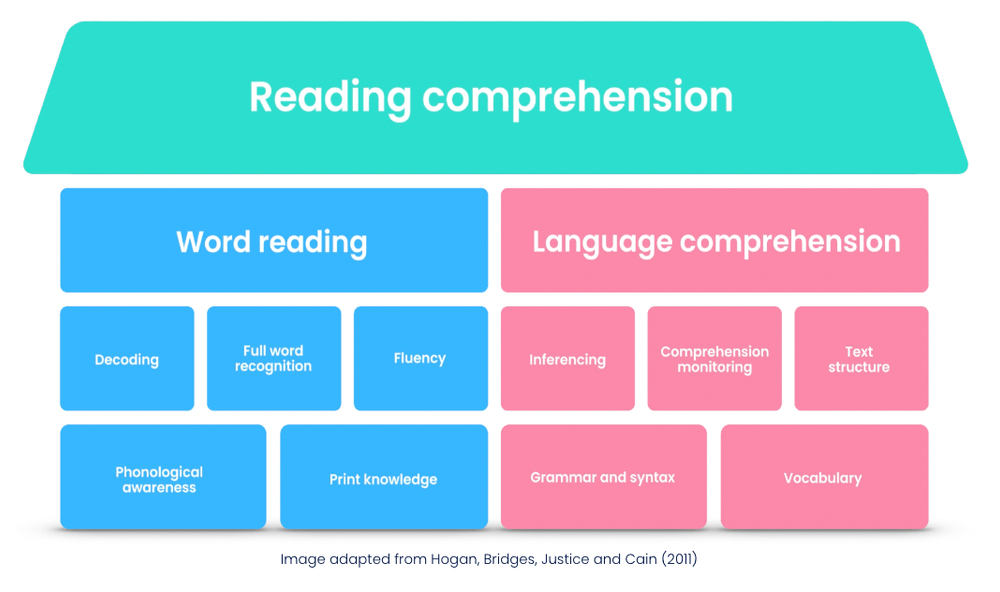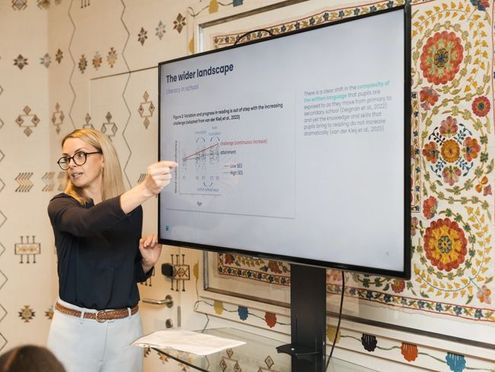What is Reading for Pleasure?
The National Literacy Trust (NLT) defines Reading for Pleasure (RfP) as “Reading we do of our own free will, anticipating the satisfaction we will get from the act of reading”. In their report, the NLT also conceptualise RfP as an act of play, allowing young readers to experience different worlds in their imagination in a process that is at once active and interactive. Also referred to as independent or recreational reading, RfP is reading that is freely chosen or that readers freely and enthusiastically continue after it is assigned. Closely associated with intrinsic motivation, it is “reading that children do for themselves at their own pace, with whom they choose and in their own way” (Cremin, 2019).
What these attempts to define RfP have in common is an emphasis on the reader's own volition, their agency and desire to read, and their anticipation of the satisfaction gained.
What are the benefits of reading for pleasure?
Research points to the extensive and far-reaching benefits of RfP. As part of their review of the research literature, Clark and Rumbold (2006) identified positive correlations between extensive recreational reading and:
- Reading attainment and writing ability
- Text comprehension and grammar
- Breadth of vocabulary
- Positive reading attitudes
- Greater self-confidence as a reader
- Pleasure in reading in later life
- General knowledge
- A better understanding of other cultures
- Community participation
- A greater insight into human nature and decision-making
Clark (2011), in a large-scale survey of over 18,000 young people, reinforced this connection between RfP and academic attainment by finding that respondents who described themselves as enjoying reading ‘very much’ were six times more likely than those who did not enjoy reading to read above the expected level for their age. Similarly, the OECD (2002) reports that RfP is “the single most important indicator of a child's future success”.
In light of such compelling research evidence, it is not difficult to see why school leaders have so enthusiastically undertaken to cultivate the habit of RfP in their learners. But what are the limitations of adopting such an approach?
Are there any limitations to this approach in schools?
What studies such as those outlined above often fail to take into account is the issue of causality. Whilst it may be true that enjoyment of reading leads to higher attainment, it may be equally true that higher attainment leads to more enjoyment of reading. Herein lies the risk of promoting a ‘just get them reading’ approach to improving standards of literacy.
For learners who enter the education system from a word-rich household that has promoted the value of reading from a young age, RfP may well be the best way to enhance their literacy skills. Most of us with experience of working with young readers can picture one such student: a learner who will immerse themselves in recreational reading and come back to the classroom with a vocabulary and expressive capacity that has been incrementally enhanced by repeated exposures to words and grammatical structures. For this learner, RfP will be the most enjoyable and impactful activity they will engage in during their time in school and beyond. The arguments in favour of RfP for such a learner are indisputable. But is this the full story?
What happens to those learners (again, anyone involved in education has a clear image of these learners in mind) for whom reading is a difficult process? What happens to learners whose lack of belief in their ability to engage with increasingly complicated texts is a barrier to the intrinsic motivation that is a prerequisite for reading to be pleasurable? What happens to the nearly 1 in 10 free school meals recipients who reported to the National Literacy Trust in 2022 that they did not have a book of their own at home?
Alex Quigley put the issue succinctly in his widely influential book, Closing the Vocabulary Gap: “When you cannot read very well and you have gaps in your vocabulary, reading for pleasure is, well, not very pleasurable.”
Here, we find ourselves at the well-worn aphorism known in literacy circles as the ‘Matthew Effect’; fluent readers read more, causing them to become even better readers, while non-fluent readers shy away from reading, which has a negative impact on their growth in reading ability. This causes the gap between good readers and poor readers to widen over time, an outcome that is a far cry from the intention of any RfP initiative.
What is clear is that telling learners to ‘just get reading’ is a wholly inadequate response to issues of literacy development and educational disadvantage. Despite its many merits, when relied on as a sole strategy for improving literacy in schools, RfP becomes akin to simply leaving literacy development to chance. If we’re serious about fostering a culture in schools where learners see reading as a pleasurable activity, we first need to equip learners with the foundational knowledge they need for reading to become pleasurable.
How Bedrock can support a Reading for Pleasure initiative
The Education Endowment Foundation has put forward a model of reading comprehension that conceptualises reading as a house. Adapted from Hogan, Bridges, Justice and Cain’s 2011 publication, the Reading Comprehension House seeks to make explicit the distinct foundational skills that are required in order for learners to become fluent readers. It depicts knowledge of vocabulary and knowledge of grammar as the foundational skills for language comprehension, and in so doing provides educators with a starting point for teaching learners how to read for pleasure.

The Reading Comprehension House teaches us that an RfP agenda must be aligned with direct, deliberate, proactive instruction of academic vocabulary and conscious, deliberate attention to the grammatical rules and patterns that govern their use. Only by doing so can schools hope to turn word-poor learners into fluent readers who find pleasure in independently sourced reading materials, thereby alleviating the worst excesses of the ‘Matthew Effect’.
Bedrock Learning offers schools a solution to these problems by providing a learning program designed to strengthen reading skills through targeted instruction of academic vocabulary and grammar. Its adaptive algorithm adjusts content based on learners' performance, ensuring a tailored approach to meet individual needs. Schools who leverage Bedrock’s solutions are proactively supporting their struggling readers towards fluency, leaving no learner behind in the process, whilst simultaneously challenging and improving their already-brilliant readers as well.
We should promote reading for pleasure at every opportunity, but doing so without pausing to consider the challenges many learners encounter during independent reading is a failure to support those learners who need the guidance of their teachers the most.




